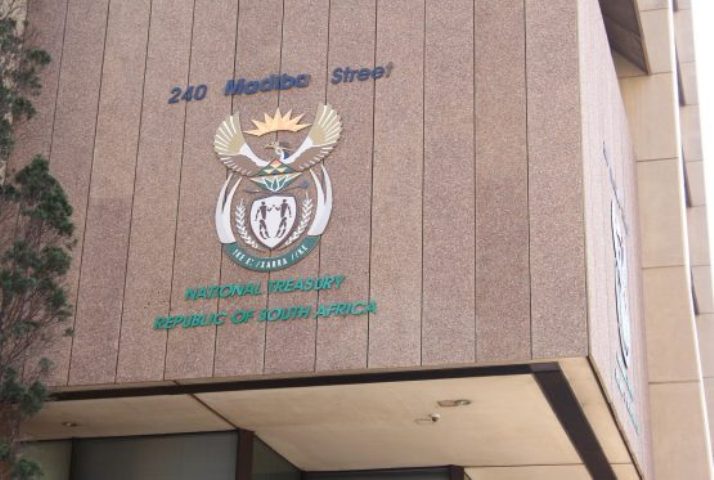Municipalities Underspend Infrastructure Grants in Q2 2024/25, Treasury Reports
The Integrated Urban Development Grant (IUDG) and the Municipal Infrastructure Grant (MIG) stood out as the best performers in Q2.

- Country:
- South Africa
Local government performance in managing infrastructure and service delivery grants continues to face major challenges, with new data from the National Treasury showing significant underspending by municipalities on conditional grants during the second quarter (Q2) of the 2024/25 municipal financial year.
According to the latest Local Government Revenue and Expenditure Report, which covers the period ending 31 December 2024, municipalities spent only R12.8 billion—just 29.1%—of the total R44.1 billion allocated in direct conditional grants for the first half of the year. This figure is considerably lower than the reported expenditure by National Transferring Officers (NTOs), who recorded R18.4 billion in spending, or 41.7% of the total allocation.
Infrastructure Grants: Major Underspending
Treasury’s report points to worrying trends in several key infrastructure-related grants, many of which support critical services such as water and sanitation, road networks, housing upgrades, and disaster relief. Six major infrastructure grants performed particularly poorly in the second quarter:
-
Municipal Disaster Recovery Grant (MDRG): Only 16.9% of its allocation was spent, continuing a multi-year trend of severe underperformance. Treasury flagged the MDRG as a grant facing persistent challenges in implementation and utilisation by municipalities.
-
Integrated National Electrification Programme (Municipal) Grant (INEP): 38.4% expenditure, aimed at expanding electricity access through municipal infrastructure.
-
Metro Informal Settlements Partnership Grant (ISUPG): 34.7% of its budget spent, designed to support the upgrading of informal settlements in metropolitan areas.
-
Neighbourhood Development Partnership Grant (NDPG): 33.2% expenditure, which funds projects in townships to promote local economic development and spatial transformation.
-
Public Transport Network Grant (PTNG): A low 22% of allocated funds were spent, despite ongoing challenges in urban mobility and transportation infrastructure.
-
Rural Roads Assets Management Systems Grant (RRAMS): 28.8% expenditure, intended to help municipalities manage and maintain rural road infrastructure.
Better-Performing Grants
Despite the overall poor grant performance, some grants showed encouraging results. The Integrated Urban Development Grant (IUDG) and the Municipal Infrastructure Grant (MIG) stood out as the best performers in Q2.
-
IUDG: Achieved 52% expenditure of its R1.1 billion allocation, reflecting strong project pipeline development and better fund absorption.
-
MIG: One of the largest infrastructure grants with a R17 billion budget, recorded a commendable 54.9% expenditure rate, continuing its solid performance from the first quarter.
Grants administered by the Department of Water and Sanitation, such as the Regional Bulk Infrastructure Grant (RBIG) and the Water Services Infrastructure Grant (WSIG), also registered modest progress. While these performed better than some other grants, their expenditure levels were still lower than those recorded in the same quarter of the 2023/24 financial year.
Overall Municipal Financial Performance
The report also details broader financial performance metrics for municipalities across South Africa. As of the end of December 2024:
-
Total Operating Expenditure: R273.2 billion spent out of an adopted R572.5 billion budget (47.7%).
-
Capital Expenditure: R14.3 billion spent, only 18.4% of the R77.4 billion capital budget.
-
Total Aggregate Spending: Municipalities spent R287.5 billion, or 44.2% of the total adopted expenditure budget of R649.9 billion.
-
Revenue Collection: Municipalities generated R325.5 billion in billing and other revenue streams, representing 49.9% of their total adopted revenue budget of R652.3 billion.
Challenges and Outlook
Treasury highlighted that the overall underperformance of conditional grants is concerning, particularly given the pressing service delivery needs in many communities and the strategic objectives tied to these funds. The MDRG’s persistent underperformance suggests deep-rooted issues in municipal readiness, project execution, and financial management capabilities.
Additionally, the low capital expenditure rate (18.4%) underscores structural constraints in municipalities' ability to roll out infrastructure projects on time and within budget.
The Treasury has urged municipalities to improve their financial planning and project implementation capacity. It emphasized that underspending on infrastructure not only delays essential services but also risks forfeiture of funds, further compounding service delivery backlogs.
As the financial year progresses, National Treasury is expected to intensify oversight, technical support, and compliance monitoring to help municipalities improve their grant utilisation and meet developmental targets.
- READ MORE ON:
- National Treasury










